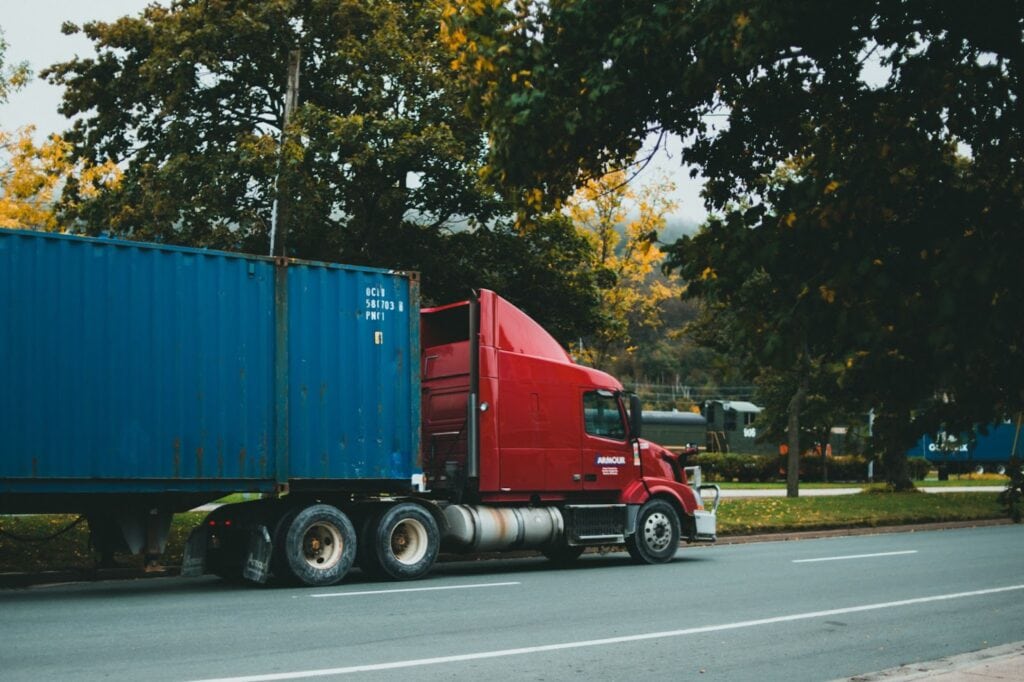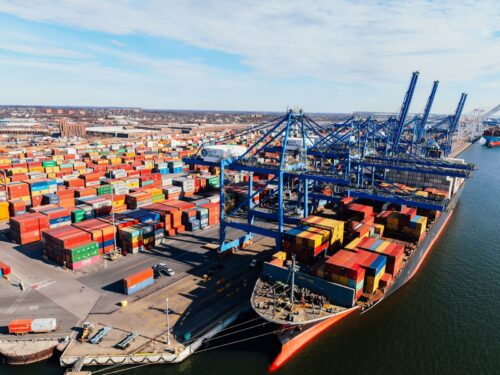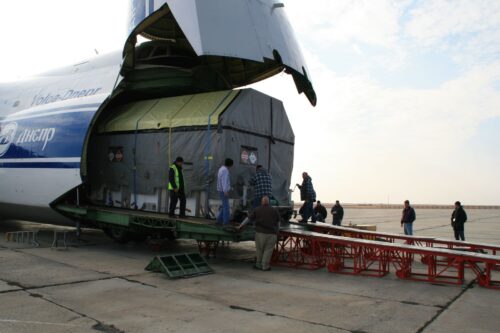Multimodal Transportation: Definition, Examples, and Advantages

In an era of globalization, where swift and efficient transportation is crucial, the logistics sector has had to innovate and adapt.
Among the various evolving transportation services, multimodal transportation stands out as an integrated solution catering to diverse intermodal shipping needs.
Let’s delve into this concept and understand its significance in today’s fast-paced world.
What is Multimodal Transportation?
Multimodal transportation refers to using at least two different modes of transport in a journey to move goods from one point to another.
This could involve road, rail freight, sea, or air, and is typically under a single contract with one transport provider who takes responsibility for the entire journey. This differs from intermodal transportation, wherein the goods are transported using multiple modes, but each journey segment is under a separate contract.
There is also multimodal and intermodal transportation. While “multimodal” focuses on the single contractual aspect, “intermodal” emphasizes the multiple transport segments, even if they employ various modes.
Main Modes of Multimodal Transportation
The effectiveness of multimodal and intermodal transportation lies in its ability to seamlessly integrate various modes of transportation to ensure that goods reach their destination efficiently.
Let’s explore the primary modes that form the backbone of this intricate system.
Road Transportation
When you think of transportation, roads immediately come to mind. With its vast network of highways and trucks, road transportation plays an indispensable role in the multimodal system. Trucks are often the starting or concluding point of a multimodal journey, ensuring goods are picked up from their origin and delivered right to their destination. This aspect of transportation is often referred to as ‘last-mile delivery.’
Road transportation offers unmatched accessibility and flexibility. Whether a cargo’s journey begins on a ship, plane, or train, it will likely end on a truck. Trucks can navigate city streets, rural areas, and everything in between, making them versatile carriers suitable for various cargo types. Moreover, with technological advancements, trucking has become even more efficient, with GPS and logistics software ensuring timely deliveries and route optimization.
Rail Transportation
Extensive rail networks are woven into the fabric of many countries’ infrastructure, designed to move cargo vast distances with efficiency. Rail transportation is particularly effective for bulk cargo – commodities like coal, minerals, and grains are best suited for these long hauls.
Not only does rail offer an effective solution for long-distance transportation, but it also boasts of impressive efficiency levels. Trains can haul large cargo at once, making it a more economical choice in many scenarios.
Furthermore, rail transportation is often viewed through the lens of sustainability. Emitting fewer carbon emissions than road transport, trains offer an environmentally friendly alternative, highlighting the balance between industrial needs and environmental concerns.
Maritime Transportation

The vast and deep blue oceans are highways for huge vessels carrying cargo from one continent to another. Ports, acting as the gateways to these highways, facilitate maritime transportation and intermodal shipping and see a flurry of activity as container ships load and unload their goods.
Maritime transport is the backbone of global trade, transporting many of the world’s goods. Regarding bulk shipments over great distances, container shipping or intermodal shipping is incredibly cost-effective. However, while maritime transportation scores high on operational cost efficiency, it often comes with the trade-off of slower transit times compared to other modes.
This slow pace is sometimes a limitation, especially when the cargo needs urgent delivery.
Air Transportation

Sky’s the limit when speed is of the essence! Air transportation is the pinnacle of speed and efficiency, especially when time-sensitive deliveries are at stake.
It’s the go-to mode for perishable goods, ensuring that commodities like fresh produce, flowers, and medicines reach their destination before losing value. With express delivery services being a major component, air transport offers a global reach, connecting even the remotest of destinations.
However, this unmatched speed comes with its own challenges, primarily cost-related. Air freight is generally more expensive than other modes of transport, making it a choice that shippers weigh based on urgency and budget.
Pipelines
Often running silently beneath our feet or hidden from view, pipelines serve as the veins of the energy sector. Primarily associated with the transportation of oil, gas, and other energy resources, pipelines provide a continuous flow of materials over long distances.
This uninterrupted transit ensures a steady supply to meet the growing energy demand. Pipelines are often lauded for safety, reducing the risk of moving hazardous materials over roads or rail.
However, their usage is predominantly limited to the energy sector, offering limited versatility. Unlike other modes, which can adapt to different cargo types, pipelines are specialized conduits, tailored specifically for energy transport.
Examples of Multimodal Transportation
The practical application of multimodal and intermodal transportation is evident across global supply chains. By integrating multiple modes of transportation, businesses achieve flexibility, speed, and operational cost efficiency. Here are some real-world cases that showcase the successful implementation of multimodal logistics:
IKEA’s Supply Chain: A well-known case study in logistics is IKEA, the Swedish furniture giant. They efficiently combine road, rail, and maritime transport to deliver products from manufacturers to stores worldwide. Flat-pack designs allow optimal space utilization in containers, which transit via ships. Upon arrival at ports, these are dispatched to regional warehouses and stores through rail or trucks.
Amazon’s Global Network: E-commerce leader Amazon integrates air, road, and rail transport in its vast logistics network. Its ability to promise and meet two-day or even same-day deliveries in multiple regions is attributed to its well-coordinated multimodal transportation system and modes of transportation.
Tennessee Auto Manufacturers: In a specific example, auto manufacturers in Tennessee have embraced rail and road transportation to move parts and finished vehicles. Raw materials arrive via rail, assembly happens, and the finished vehicles are dispatched by road to various dealerships.
Multimodal Transportation Advantages
Multimodal transportation brings myriad benefits to the table, transforming supply chains and optimizing business operations. These advantages aren’t just theoretical; they have real-world impacts, enhancing supply chain efficiency and overall business performance.
Communication
Effective intermodal and multimodal transport ensures seamless communication across different services and carriers. This uninterrupted communication flow ensures that each segment of the transport chain is aware of schedules, delays, or changes, leading to more efficient transitions between modes and reduced downtime. This makes intermodal and multimodal transport easy and effective.
Deadlines
With intermodal and multimodal transport, the synchronization of various modes, meeting deadlines becomes more achievable. When one mode faces unforeseen delays, alternative modes can be quickly employed to ensure timely delivery, ensuring businesses uphold their customer commitments.
Accessibility
Multimodal transportation allows goods to be transported to even the most remote areas. By combining, for instance, road and air transport, businesses can ensure that their products reach areas that might not be directly accessible by larger transport modes like ships or public transportation.
Accountability
Employing a multimodal transport operator often means having a single contract, enhancing accountability. With one entity responsible for the entire journey, it’s easier to pinpoint responsibility in case of damages or delays, ensuring more effective recourse and resolution.
Multimodal Transportation Disadvantages
Despite its numerous benefits, adopting multimodal transportation can come with its own challenges that businesses must navigate.
Awareness of these challenges enables companies to devise strategies to mitigate them effectively.
More Paperwork
With multiple modes and carriers involved, administrative tasks are often increased. The paperwork can pile up from different billing documents to various insurance requirements.
However, digitalizing operations and using integrated logistics platforms can streamline these processes, reducing the administrative burden.
Inability or Poor Ability to Track Shipments
Switching between various modes might lead to blind spots in shipment tracking. This can create uncertainty about cargo’s exact location.
Implementing advanced tracking systems and ensuring communication between different carriers can provide real-time updates, improving transparency.
Supply Chain Disruptions
The involvement of different modes means there’s potential for disruptions, especially if one mode faces delays. This can have a ripple effect on subsequent modes.
To counteract this, businesses can establish contingency plans and maintain open lines of communication with all involved parties to adapt swiftly to unforeseen changes.
Best Practices for Multimodal Transportation
When diving into the world of multimodal transportation, businesses should follow some best practices to maximize efficiency and minimize potential pitfalls:
- Planning Ahead: The complexities of using multiple modes require foresight. Plan routes, schedules, and contingency plans in detail.
- Flexibility: Stay agile and be ready to make quick decisions if unexpected challenges arise.
- Leverage Technology: Use advanced tracking systems and integrated platforms for seamless communication and real-time updates.
- Build Strong Relationships: Establish trust with carriers to ensure smooth transitions between modes.
- Understand Regulations: Different modes might have varied regulations. Familiarize yourself with these to avoid compliance issues.
Frequently Asked Questions
Before we conclude, here are some quick answers to the most commonly asked questions about multimodal transportation and multimodal shipping:
What is the difference between multimodal and intermodal transport?
Multimodal transport involves using multiple modes of transport under a single contract, while intermodal transportation uses multiple modes under separate contracts for each mode. To learn more, see our article on Intermodal vs. Multimodal Transportation.
What is an example of multimodal transportation?
An example is a product shipped overseas via a ship, offloaded at a port, transported by rail to an inland terminal, and delivered by truck to the retailer. Public transportation can also fit this definition.
What is the role of multimodal transport?
Multimodal transport (as opposed to multimodal shipping) facilitates efficient and flexible movement of goods using a combination of transportation modes, optimizing cost, speed, and reach.
Final Thoughts
Multimodal transportation and multimodal shipping are game-changers in today’s complex global supply chains, offering versatility, efficiency, and cost-effectiveness.
While it presents its own challenges, understanding its intricacies and benefits, combined with best practices, can lead to significant advantages for businesses.
As we venture further into a globally connected world, leveraging multimodal transport will be pivotal for companies aiming for logistical excellence and competitive advantage.
